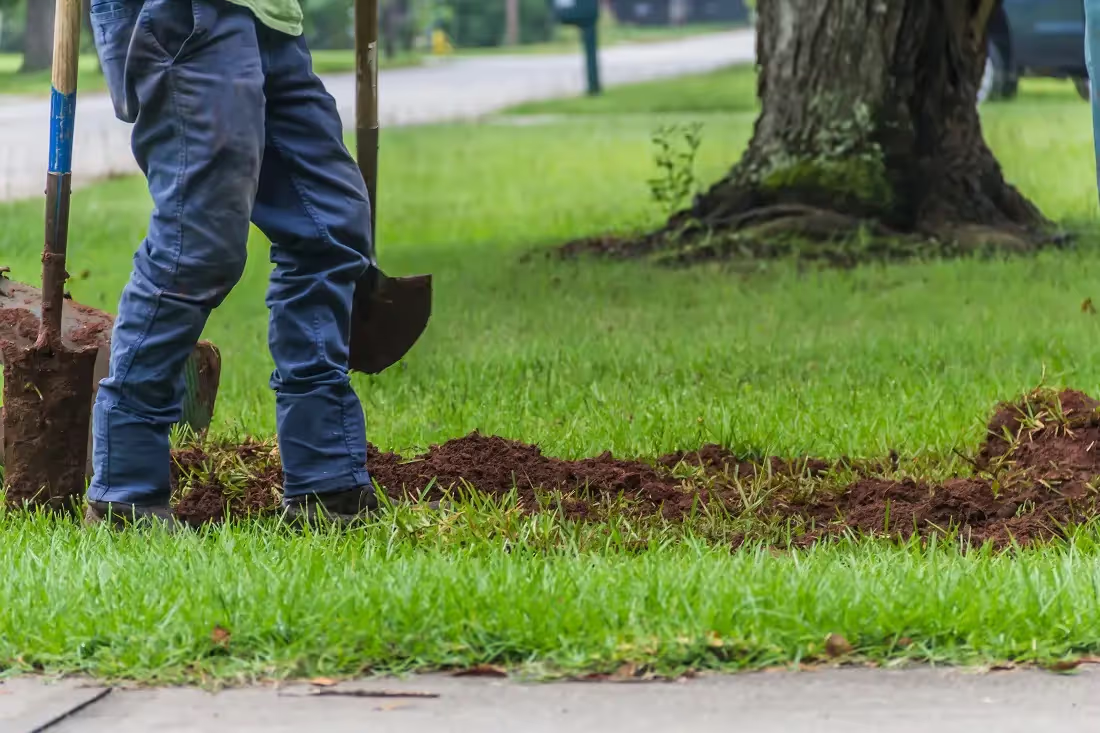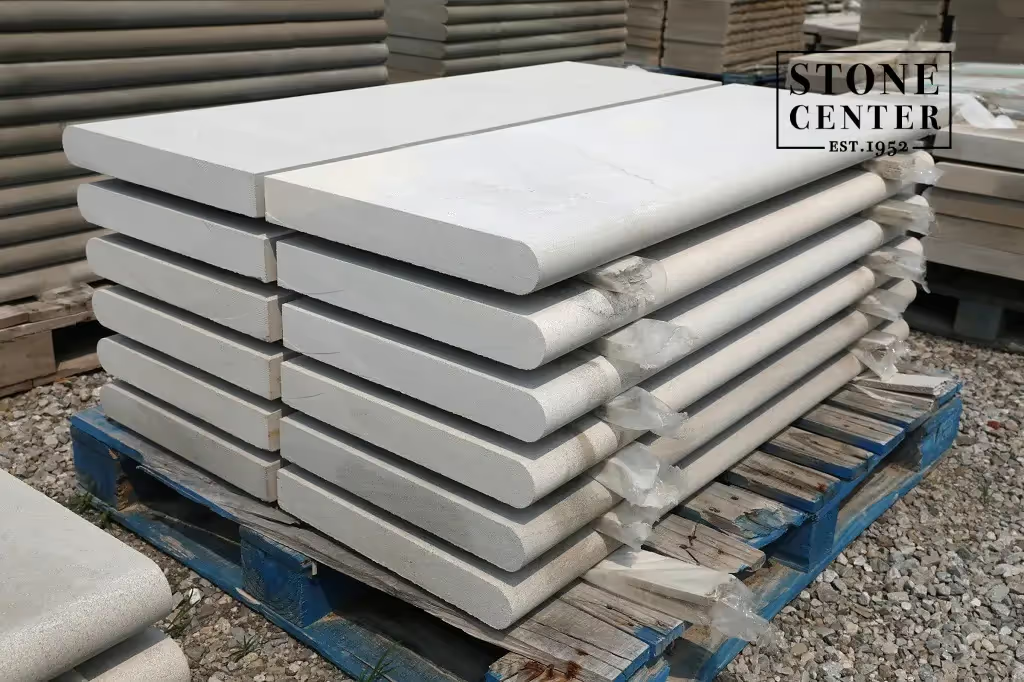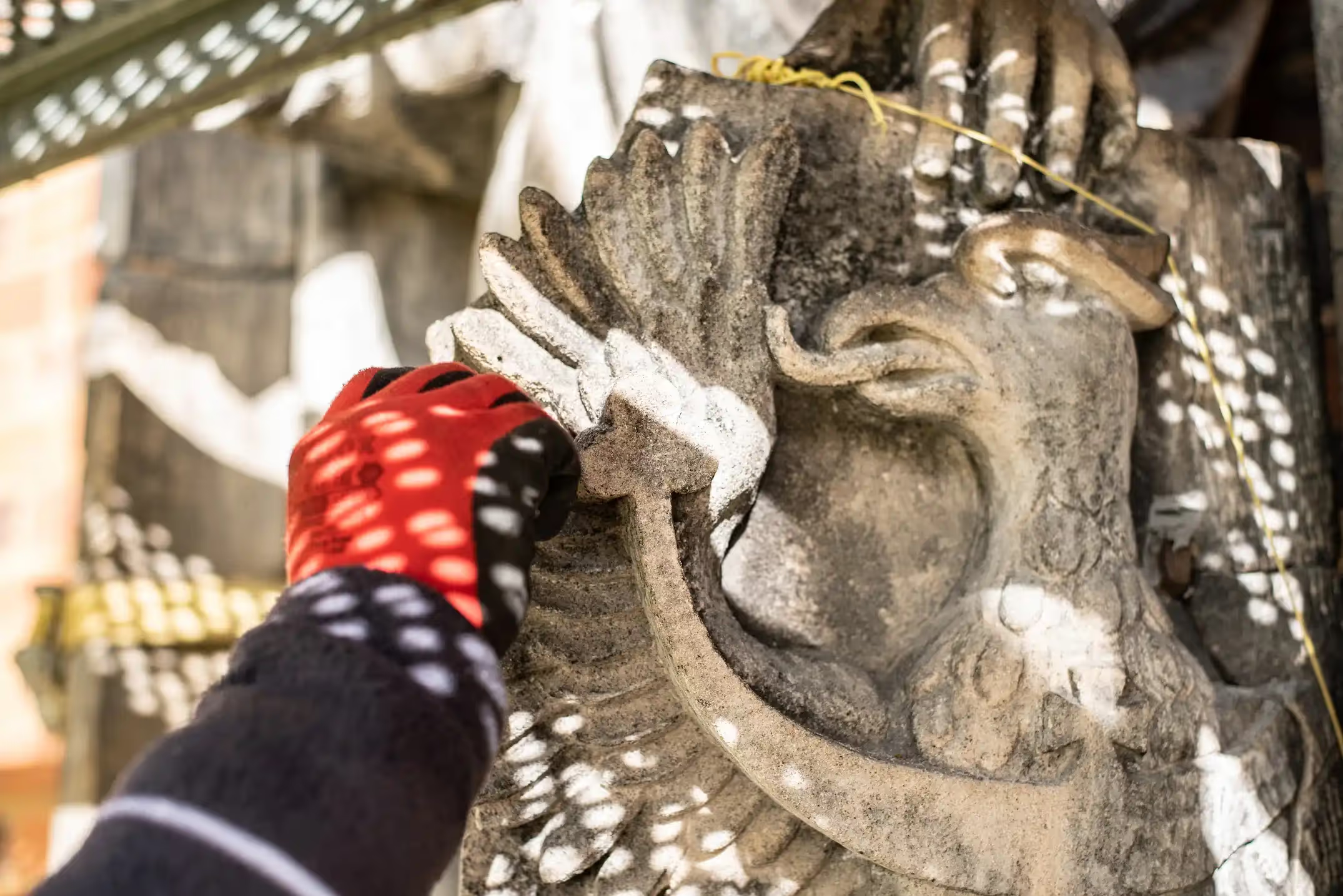- Stone Center
- Blog
How to Make a Garden Border with Stones: Expert Tips for Homeowners
8/7/2025
6/10/2025
How to Make a Garden Border with Stones: Expert Tips for Homeowners

Creating a stone garden border edging is a great way to add both visual interest and functionality to your outdoor space. Not only does it help define the boundaries of your garden, but it can also prevent grass and weeds from encroaching on your plants.
One excellent option for sourcing natural stones for your landscaping edging project is Ohio's Stone Center, which offers a wide variety of natural stone products to suit any landscaping need. In this guide, we’ll walk you through how to edge a flower bed with stone, while helping you choose the best materials, layout, and techniques for success.
Stone Garden Borders Benefits
Natural stone border edging refers to using natural stones to create boundaries around garden beds, pathways, and landscape features. This popular choice serves multiple purposes in garden design and landscape architecture. Some of the benefits of using stone edgers for landscaping as garden borders include:
- Structural definition: Adding structure and definition to your garden beds while creating clean lines that separate different areas of your yard.
- Plant protection: Protecting your plants from damage caused by lawnmowers or foot traffic.
- Visual enhancement: Enhancing the overall look of your garden by adding texture and contrast.
- Moisture retention: Stone garden borders aid in maintaining soil fertility by effectively absorbing moisture and retaining water.
- Erosion control: They can also serve as a barrier against erosion, which helps to prevent soil loss.
- Low maintenance: Stone garden borders are relatively easy to install and maintain.
List of Tools and Equipment for Stone Landscape Edging
Creating a stone landscape edging requires a variety of tools and equipment to ensure a successful and efficient project. Here's a list of essential tools and equipment needed for installing new garden borders:
- Shovel: For digging the trench in which the stones will be placed.
- Wheelbarrow: To transport the stones and other materials to the project site.
- Level: To ensure that the stones are installed evenly and straight.
- Tamper: To compact the soil around the stones for stability.
- Chisel: For shaping and cutting the stones as needed.
- Safety gear: Including gloves, eye protection, and a dust mask, to protect against injuries and dust.
- Stone cutting saw: For precise cuts on stones that require more shaping than a chisel can provide.
- Mason's hammer: A small sledgehammer used for splitting or shaping stones.
How Much Stone Do I Need for Edging?
To accurately calculate the amount of edging stones for landscaping, here are some factors to consider:
- Measurement: Measure the length and width of the area you plan to edge.
- Thickness determination: Determine the desired thickness of the stones.
- Style selection: Decide on the style of edging you want, such as a single row or double row.
- Waste calculation: Consider adding an additional 10% to account for any waste or errors during installation.
Once you've calculated the total square footage of the area to be edged, you can consult with your supplier to determine the amount of stone needed to complete your project.
How to Edge a Flower Bed with Stone (and Other Garden Elements)
Natural stone border edging isn’t just for flower beds — it’s also perfect for edging trees, walkways, patios, and raised beds. With this guide, you can create clean, lasting borders that enhance any part of your landscape.
Here's a step-by-step process for creating a stunning stone border that will add visual interest and definition to your landscaping:
#1. Consider Your Soil Type

Evaluate the quality of your soil to determine its drainage, nutrient levels, and pH balance. Different plants, ornamental grasses, and landscaping materials thrive in different types of soil, so understanding your soil type is crucial for selecting the appropriate plants and materials for your garden border edging. You can perform a simple soil test to determine the pH balance and nutrient levels of your soil and adjust the soil as needed to ensure that your plants and materials can thrive and attract pollinators when needed.
#2. Choose the Best Plants

Select plants that are appropriate for the size, style, and environmental conditions of your garden. Consider the sunny position, soil type, and moisture levels when choosing plants for your garden border edging. Ideally, you'll choose plants that complement the overall look of your landscaping design and that will thrive in the chosen location.
#3. Mark Out the Area

This involves using a garden hose or stakes and string to outline the perimeter of the area where you want to add the border, including any curved edges. Take time to measure the area carefully and adjust the placement of the stakes and string as needed to achieve the desired shape and size for your garden border edging, including any curves or irregularities.
#4. Dig the Trench

Use a shovel or trenching tool to dig a trench along the perimeter of the marked area. Your trench should be at least 2-3 inches deep and wide enough to fit your stone edging securely. For larger stones, you may need to dig deeper to ensure they sit properly and won't sink over time. Be sure to remove any rocks or debris from the trench before proceeding with the installation of the edging materials.
#5. Prepare the Foundation Base

What do you put under stone edging? The answer is simple: gravel and sand. Start by laying a 2-3 inch base of sand and gravel in your trench, then compact it thoroughly using a tamper or rent a compactor for larger projects. This prevents the stones from shifting and creates a stable foundation that maintains proper drainage.
Use our gravel calculator to determine how much base material you'll need.
#6. Place the Weed Membrane

Lay down a layer of weed membrane in the trench before placing the edging materials. The weed membrane helps to prevent the growth of weeds and other unwanted plants within the border. Use a high-quality, durable weed membrane that's thick enough to resist tearing or degradation over time. Overlap the edges of the weed membrane to create a seamless barrier against unwanted plant growth.
#7. Place the Stone Edging

Carefully position the stone edging materials into the trench, making sure they fit snugly against each other and are level with the ground. Choose the appropriate size and style of stone for your desired landscaping design. To ensure a professional-looking finish, use a level and rubber mallet to adjust the positioning of the stones as needed. Once the stones are in place, backfill the gaps with soil or gravel to secure the edging.
What Types of Natural Stone Are Best for Edging?

With so many options available, it can be challenging to decide which type of stone edging will best suit your needs. Let's discuss the main types:
Natural Boulder Stone
Natural boulder stone is a popular choice for garden edging due to its durability, versatility, and natural beauty. This type of natural stone border edging can provide a variety of benefits that include:
- Exceptional durability: Natural boulder stone is a highly durable material that can withstand exposure to the elements.
- Design versatility: Natural boulder stone comes in a variety of sizes and shapes, making it a versatile option that can be used to create a variety of garden edging designs, from simple borders to complex rock gardens and retaining walls.
- Low maintenance: This material requires minimal upkeep and is easy to clean, helping keep your garden looking beautiful with minimal effort while creating lasting value.
Limestone Edging Stones
Limestone offers a classic, elegant appearance that works beautifully in traditional and contemporary garden designs. This versatile stone provides numerous advantages for edging projects:
- Weather resistance: This durable stone handles freeze-thaw cycles well, so it’s ideal for various climates.
- Easy to work with: Limestone can be cut and shaped relatively easily, allowing for custom fits and creative design solutions.
- Timeless appeal: The classic look of limestone ensures your garden borders will remain stylish for decades.
Natural Stone Pavers

Natural stone pavers offer clean lines and a uniform appearance. They’re perfect for formal garden designs and geometric layouts:
- Easy installation: The regular shapes make planning and installation more straightforward than irregular stones.
- Versatile applications: Beyond edging, these pavers can extend into pathways, patios, and other landscape features.
- Long-term value: High-quality stone pavers maintain their appearance and structural integrity for years.
Decorative Chipping Edging
This type of edging provides a range of benefits, including:
- Quick installation: Decorative chipping edging is easy to install, making it a great option for those with limited time or resources.
- Color variety: This type of edging comes in a variety of colors and textures, providing endless possibilities for customization and creativity.
- Excellent drainage: This type of edging is permeable, allowing for proper drainage and preventing water from pooling around your plants.
Caged Rocks (Gabion Walls)
Gabion walls offer a range of benefits, such as:
- Flexibility: Gabion walls can be used for a variety of landscaping designs.
- Strength: Gabion walls are known for their exceptional strength and ability to withstand harsh weather conditions and heavy foot traffic.
- Aesthetics: Decorative natural rocks create a unique rustic and visually appealing addition to your outdoor space.
Pebble Edging
Pebbles are an affordable option for small gardens compared to other options. They also:
- Low maintenance: Require minimal upkeep.
- Color options: Are available in numerous colors.
- Temperature regulation: Help regulate soil temperature, promoting healthy plant growth and reducing the need for additional watering.
Advanced Tips for Raised Garden Bed Borders
Raised-bed borders may add structure and depth to your garden design. Here are some tips to consider when creating a raised-bed border:
- Choose the right location: Select an area that receives plenty of sunlight and has good drainage for your raised-bed border.
- Build a sturdy frame: Use durable and rot-resistant materials such as cedar or pressure-treated lumber to construct the frame for your new garden border.
- Prepare the soil: Fill the raised flower bed with a combination of garden compost and topsoil to create a nutrient-rich environment for your plants.
- Be strategic: Consider the spacing and growth habits of plants when selecting them for your raised-bed border.
- Add lawn edging: Install lawn edging around the perimeter of the raised bed to create a clean and defined border between the lawn and the garden.
Make Your Garden Stand Out
Incorporating natural stone border edging into your landscape design brings undeniable charm, structure, and low-maintenance functionality to your home. Whether edging a garden bed with rocks, building a layered wall, or crafting a lovely curved flower bed, stone is the smart, stylish choice.
If you're considering a rock-edge landscaping project, be sure to work with a reputable stone supplier like Stone Center of Cincinnati and Columbus to ensure that you have access to high-quality materials and expert guidance. Contact us today to get started on your natural stone landscaping project and transform your outdoor space.
FAQ
.avif)
Jon, the owner of Stone Center, is a knowledgeable expert in natural stone products, specializing in various types of stone for landscaping and architectural projects. Passionate about promoting the beauty and versatility of natural stone, Jon aims to use these blogs to inspire readers with creative ideas to upgrade their homes.
How much does it cost to get a stone restored?
How much you end up spending to restore stone varies on the type of stone, the technique, and the stone’s current condition. Stone in good condition will cost less to restore, whereas stone that has a lot of wear and tear may require a longer restoration.







.avif)
.avif)

.avif)
.avif)

